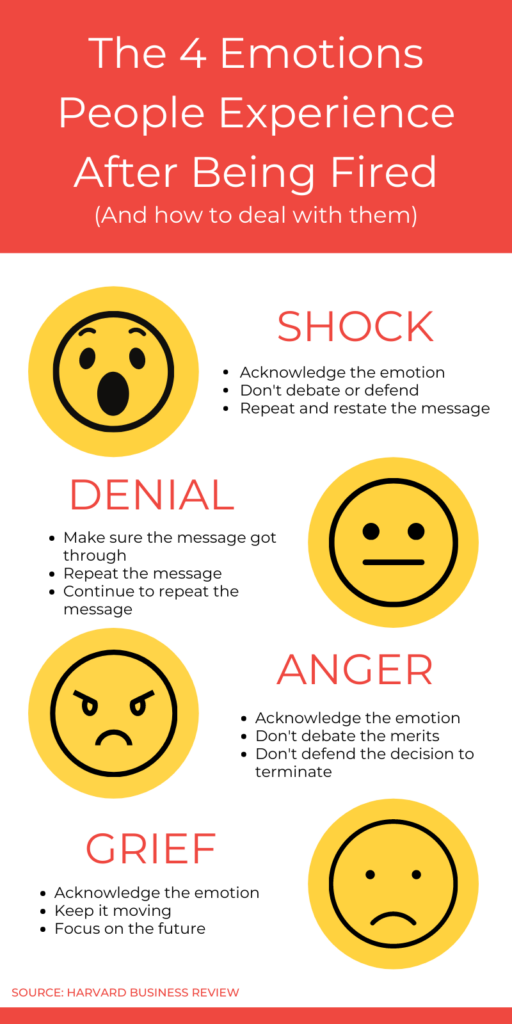The day has come. You like this employee, but they aren’t doing a good job, and the team is being affected by this. You know what you have to do, but the question is how to let a remote employee go? Terminating remote employees is never easy, but it’s essential to approach it with the same level of professionalism, empathy, and transparency as you would with in-office staff.
While the physical distance might change how we communicate, it should never affect the respect and care with which we handle such situations.
It’s often the case that it’s nice to be the boss, the team leader, and the manager. There’s plenty of cool stuff it brings to the table, but there are a few responsibilities that aren’t so pleasant. In over ten years of managing teams, remote and local, having to terminate someone tops my list.
In this post, I’ll share the tips, tricks, and preparations you need for remote employee termination in a way that:
- Feels fair to both parties
- Stings your soon-to-be-ex-employee as little as possible
- It lets you sleep at night
Sort Out the Logistics Before Conducting The Termination
Firing someone remotely takes significantly more preparation than doing it face-to-face. So when you decide to make employee cuts, know that remote firing is much more complicated than just setting up a Zoom call.
There is a list of termination processes that need to be taken care of before you have the talk such as revoking any access to critical company documents. The last thing you want is to have to figure out how to restrict someone after you have already had that painful talk.
Be the Better Boss
Some bosses choose to cold fire someone without explaining, letting the employee stay in a state of despair. Remember that time your ex sent you a text message saying: “It’s over; it’s not you, it’s me; I need time for myself, blah blah blah”? Well, this is basically the same feeling. So be the better boss!
Before having to fire someone remotely, ask yourself: How can I make this as right as possible for my employee?
No matter how hard and unpleasant this is for you, you’re not the one losing your job. So, approach it from a place of empathy. First up, think about compensation and deliverables.
In the best-case scenario, your contract will make clear to both parties what to expect. But life is rarely so clean. Sometimes, you need to cut your losses, and it doesn’t make sense to keep someone until the end of the month. There might be no provision in your contract for that. In this case, I recommend you look at the employees’ deliverables. Have they accomplished their goals for the month?
(As an aside, make a mental note – actually, a physical note, on a fluorescent pink post-it stuck right in the middle of your screen – saying: WRITE BETTER CONTRACTS)

(As a second aside, you avoid a lot of headaches related to the above if you work with a hiring agency that handles contracts and HR. Hello, that’s us, DistantJob!)
If the answer is “No,” then work out something that you think is fair for both parts. Base it on what they’ve delivered and what they are expected to produce until leaving.
Let Them Finish Their Main Tasks
Why not let them finish doing whatever they are doing? Assuming that they do a decent job, there is still a reason to terminate as fast as possible and leave things ready for the next employee.
Letting them finish their tasks doesn’t mean taking things slowly. It doesn’t matter how professional your employee is about leaving. Having to interact daily with someone that is going brings team morale down. So be like a samurai in those old Japanese flicks – cut fast and cut clean, with one strike. Anything else will cause needless suffering for everyone involved.
So, what can you do if it’s a position that can’t be empty for long, or at all? It would be best if you did some hiring before the firing. This is less than ideal.
Effective Remote Hiring Strategies with Bretton PutterYou have the option to be sneaky about it and hire as an addition to the team. You can also try to hide the hiring process as much as possible, but I have trouble sleeping at night when doing this. It’s painful to see someone working while unaware of the sword of Damocles edging ever closer to her neck. I prefer to let the employee know about the decision before starting the hiring process.
Tell Them Before Anyone Else on the Team
As for the team, they should never get to know before the employee. Some people will because it is unlikely, you’ll be deciding on your own. But most of the team should only be told after your employee knows.
And this is part of “The Conversation.” You should ask the person leaving how they would prefer to handle it – do they want the team to know? Do they want to tell them themselves? Or would they instead do a Houdini and disappear one day? Some of these might not be possible depending on the employee’s position and team dynamics. In general, though, allow them to exit the stage in a way with which they’ll be comfortable.
Don’t Forget About the Security Aspect
Finally, there’s the matter of security. Revoke any access to critical company documents and information minutes before the talk. This is the digital equivalent of “Security will escort you out of the building.” For the rest, figure out a clear cut-off point and tell them during “The Conversation.” This is the “We will set a date for you to come and clear your desk.” Quite important if the person fired is a developer who has access to your website directly.
5 Tips on firing a remote employee
Here are five key steps to ensure a respectful, clear, and compliant process when terminating a remote employee.
1. Be Sure You’re Doing It for the Right Reasons
First things first, make sure that you’re firing a remote employee for the right reasons. For example, if an employee has been doing a good job but suddenly has failed to deliver the expected results, opt for other alternatives such as talking with them about what’s going on.
If you have had these conversations with the employee several times and see no improvement, plus the team is being affected by its performance, it’s time to let this team member go.
2. Have an Offboarding Plan
An essential part of a remote employee termination is to plan the offboarding. Just as you have to plan the onboarding of new developers, offboarding should also be the same. This means to:
- Make sure that the employee who is leaving the company has documented all their tasks.
- Remove their access to all the company accounts..
- If they have equipment from the company, make sure to make the necessary arrangements to get this equipment back.
- All the HR-related tasks, such as bonuses and salaries.
3. The Conversation: Be Clear and Concise
Having to fire someone, especially in a remote setting, is awkward and difficult. However, suppose you have “The conversation” with this employee, cut to the chase. In that case, it might be hard to process for them, but it’s better than to make things way longer than they need to be because otherwise, they might not even understand what the conversation is really about.
Tell them that they are fired and justify your reasons on why you took this decision. That way, they understand that you thought things through and didn’t make an impulsive or irrational decision.
4. Always by Video Call
Firing someone remotely doesn’t need to be over a cold short email. It’s always best to have face-to-face contact. That way, although you can’t give a physical box of tissues, you can still provide them with support and words of courage.
Having this conversation via Zoom (or any other video platform) will make things easier and smoother for you and them. Keep in mind that some employees might still take it the wrong way, so it’s useful to know how to deal with the different emotions they might face.

5. Tell the Rest of the Team
After having the conversation with the employee, it’s time to let your team know. So, organize a call with them and explain to them that you fired that person. Or to make things even faster you can also make the announcement via Slack or send an email to everyone.
Script for Terminating an Employee That Works From Home
Before the conversation starts, be sure to check your posture. Don’t try to appear relaxed and cool – that’s not respectful. At the same time, don’t look strict or detached. That’s no good, either. Remember: approach this from a place of empathy and compassion.
This person isn’t bringing enough to your team and business. They need to go. That’s a fact.
Knowing this, let’s endeavor to do it without any needless suffering. Your body language plays a huge part in that. When talking about remote employees, that means that you must use video. Resist the temptation to fire someone over the phone. It will be easier, yes. But you’ll feel bad in the long run.
Once you sit down, avoid pleasantries. That drags on unpleasant anticipation. Unless someone is completely clueless, they most likely know they are in trouble. Get straight to the point.
“Look, [name], we both know this isn’t working out. I asked you to come to talk so we can decide on a way to part in good terms, as we can’t keep you working with us.” Is a script you can take and adapt as you need, depending on your specific situation.
There are a couple of significant components, mind. Notice how the first part makes the employee a partner in the conversation as best as possible. “We both know.” “So we can decide.” At the same time, there’s no BS – “We can’t keep you working with us.” That leaves no margin for doubt. It’s clear and concise, a samurai’s sword slash when compared to the Trumpian cudgel: “You’re FIRED!”
So where do we go from here?
Well, try to be as helpful as possible.
“Try to be helpful? I am firing this person!”
Yes, we’ve been through this. You are. And it sucks. I was here three paragraphs ago, you know? Let’s move on past the self-loathing and try to be of some service to the person who lost her/his job.
The best way you can do so is to offer immediate support in their job search. This is super easy if you’re firing them for reasons other than their competence.
You can offer them a recommendation letter. This is a standard practice of mine. At times, I’ve worked with great people that I’ve had to let go because the company was shifting directions. It was the most natural thing in the world to write them a letter filled with genuine praise. As often as possible, I would top it up with testimonials in their portfolios and work profiles. And if you can introduce them to a potential employer, do it.
Sure, the stars won’t often align like that. But when they do, you’ve turned a miserable situation for two people into happiness for three. That’s… pretty magical.
So what to do if you are getting rid of the person because they aren’t very good at their job? This is a harder position from where to offer help, but it’s not hopeless.
First, consider that although the person was not a fit for your business, they might be for someone else’s. If you’ve spent any time in any industry, you’ll know that some people have lower standards. Some companies operate fine like that. A recommendation letter – not so glowing; you want to be always honest – may still be in the cards.
At the very least, even if your now-former employee made a mess of things, you can point out a couple of strengths. Throw your frustrations away and consider the person in front of you. No-one is completely worthless. Try harder.
Another way you can improve someone’s chances, especially if they didn’t perform to your expectations, is by giving them feedback. There are two things that you must always keep in mind when you thread down this path:
• Make sure they want your feedback. Ask them! Do not, in any situation, offer unsolicited input to the person you fired. That’s not cool.
• Make sure they understand that this feedback is for their benefit. It is in no way a second chance; there’s no going back on the decision to fire them.
Then, say what you have to say about their performance. Keep in mind that they will be in a state of mind that can range from anger to tearful sadness. So, don’t belabor any points, and go light on the adjectives – they tend to rub people the wrong way. Be like those special forces teams from the movies – get in, give your feedback, get out.
If all the above fails, at least let them know that you are committed to making their exit as painless as possible. Then, start hashing out the details of that means.
Wrapping Up
Honestly, firing remote people is uncommon. The main reason is that they over-perform and over-deliver on a consistent basis. And if you need to do it anyway, DistantJob makes it easy. Because our unique process is all-inclusive – we don’t just get you a fantastic remote employee, we also take care of his/her payment and HR needs. Sounds interesting? Get in touch.




